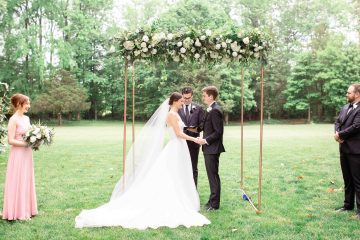Contrary to popular belief, wedding dresses were not always white. If you can believe it, brides wore any color they chose, but red was the norm. That is, until Queen Victoria bucked the trend on February 10, 1840 when she wore a white dress during her wedding with Prince Albert.
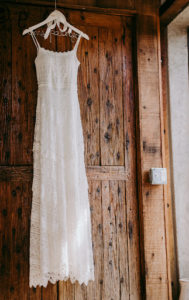
The funny part is that she wasn’t the first. Back in 1406 Princess Philippa of England wore a white dress and Mary Queen of Scots also wore white at her wedding in 1558, but Queen Victoria was the most notable when her color choice caught on. Said to represent the purity of the virgin, the color seems to have lost its meaning, but still reigns supreme as the dominant color of wedding gowns 80 years after Queen Victoria took her stance.
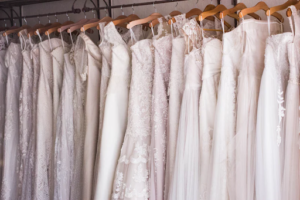
While the color of wedding dresses has remained constant, the styles have changed through the years. From ball gown length to mini skirts, A-line to Mermaid, long sleeves or sleeveless, some styles have made a comeback, while others have faded into the abyss.
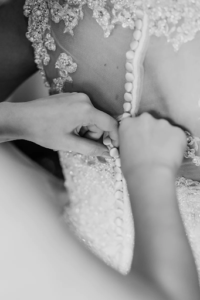
1900s – Wedding dresses in the 1900’s featured puffy, tapered sleeves and a corset that pulled the waist in. High waisted with high collars, these dresses covered the body fully.
1910s – In the next decade, wedding dresses became looser and more flowy with the sleeves becoming tighter and more form fitted.
1920s – Dresses began to feature lots of beading and flapper style to match the era. The veil became a popular piece with beaded headdresses.
1930s – Wedding dresses became very plain due to the war and the Great Depression. Some women even opted to wear a dress from their closet.
1940s – With the war still going on, wedding dresses became more of just a dress than a gown, often worn just below the knee with a hat and a coat.
1950s – Ball gowns were big in the 1950’s and by the end of the decade many brides were going strapless, but the dresses still had sleeves. Conservatively covered, the bride was pure in silk and lace, with dresses that were fitted on top and looser from the waist to the feet. Often long trains were worn as well.
1960s – As the 1960’s rolled in, gowns became more form fitted and some got shorter. With mini skirts a staple among hippies of the day, some brides adopted that style in their wedding dress with some styles being over the knee. Skimpy in length, these dresses made up for it with oversized sleeves and high necklines.
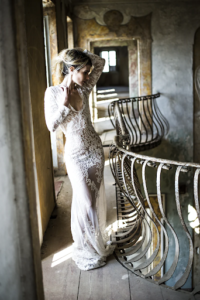
1970s – Form fitted dresses continued into the 1970’s with the dress sleeves taking center stage. Pouf sleeves and high neck lines were the trend that exploded throughout the decade.
1980s – It wasn’t until the 1980’s that wedding dresses lost their sleeves and their straps. The dresses also got tighter and slimmer and those that did keep their sleeves opted for puffy on top and tight fitting on the forearm, all in sheer lace.
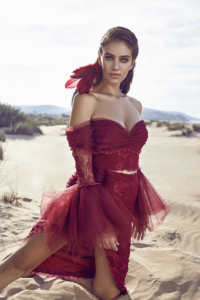
1990s – Off the shoulder short sleeves made their appearance in the 1990’s while the dresses remained form fitting with the mermaid dress becoming popular. Many women opted for this figure flattering dress with a long train.
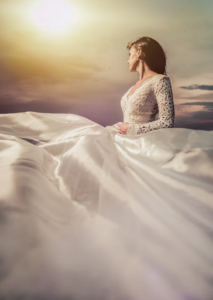
2000s – A-Line dresses made a return in the 2000’s but with lots of embellishments. Women wore the dresses tight on top, some strapless, with a wide A shape at the bottom.
2010s – The Royals inspired the comeback of the sleeve in the 2010’s, but these sleeves were form fitting and lace. No more pouf shoulders for today’s bride. As we near the end of the 2010’s, we look into the future for what the 2020’s will bring.
The one thing that has been constant throughout the years is the fact that wedding dresses got sexier and became highly influenced by social media trends. Even the A-line dresses have sex appeal with tight, bodice hugging tops or off the shoulder cuts. Women want to show off their figures as well as their dresses. Low cut necklines and v-cut backs are very popular as are tight fitting dresses and off-the-shoulder styles. W/omen today know what they want and how they want to look, knowing all eyes are on them. Embellishments and beading give the dress some extra oomph.
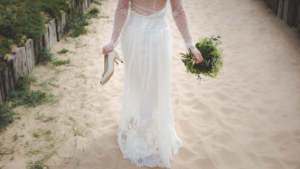
Wedding dresses in Virginia have certainly changed throughout the years. Food for thought… is it the bride dictating the changes or the dress designers? Looking back 100 years, we can see how the bride’s dress matched the times. From conservative and plain dresses during hard times to more extravagant blinged out dresses during better times we can see just how fashion is affected by the economy. That being said, what will 2020 bring and how much will celebrity style play a part in our taste in wedding dresses?



